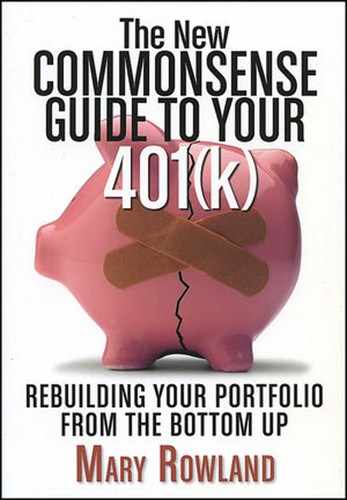THERE WAS A TIME WHEN PEOPLE referred to cash and meant the coins jingling in their pockets or the bills squirreled away in the cookie jar. During the Great Depression of the 1930s, cash meant one thing: cold hard currency that you could count on, something you could spend in the next fifteen minutes to buy a cup of coffee and a doughnut. Even money in the bank wasn't cash in the 1930s. But after Franklin D. Roosevelt signed the Banking Act of 1933 and created the Federal Deposit Insurance Corporation (FDIC), which put a government guarantee behind bank deposits, Americans gradually began to accept banks. Then bank accounts, too, became "cash."
Our definition of cash continued to change, and it changed radically in the 1970s when "cash" as we know it today was actually invented by Bruce Bent, who was casting about for a business idea. Bent hit upon a plan to collect money from depositors and loan it out to corporations at a slightly higher rate than he paid depositors. Bent figured he could offer a higher rate than a bank because of lower overhead. Because he ran into an obstacle in bank regulation, he decided to use a mutual fund format. His mutual fund would accept money from depositors and use it to make short-term loans to government and big corporations in the money markets, just as a bank does. His profit would come from charging depositors a management fee.
In November 1971, the Securities and Exchange Commission (SEC) approved Bent's registration for the Reserve Primary Fund, the first money market mutual fund. Money market mutual funds invest in short-term debt or short-term "paper," issued by the U.S. Treasury, state and local governments, banks, and large corporations. The SEC mandated that the average maturity of a money market portfolio be 120 days or fewer and that the fund invest only in the top two grades of debt as rated by Standard & Poor's Corporation or Moody's Investor Service. Because these investments were thought to be so stable, money funds offered a fixed share price rather than one that fluctuates from day to day like a mutual fund. The fund was designed so that the share price remained at $1 and the fund could promise preservation of your principal plus a market rate of interest.
The fear of a fund "breaking the buck"—or allowing the asset value to drop below $1—had mostly been extinguished over more than thirty-five years of success for the funds. In 1990, ten money market fund sponsors were forced to back up the "promise" of their funds to keep the net asset value (NAV) steady at $1. Another fifteen funds were bailed out by their sponsors in the early 1990s. Because the fund sponsors prevented these funds from "breaking the buck," consumers retained their confidence in the integrity of the $1 per share net asset value.
In September 2008, Bruce Bent's Reserve Primary Fund, the original money market fund, collapsed because it couldn't make up for the money it lost on debt it held from the failed Lehman Brothers. Investors lost confidence and pulled more than $200 billion out of money funds within two weeks. The nearly $4 trillion money market fund industry stabilized, thanks to government intervention and guarantees, but the low-interest rate climate in 2009 squeezes the funds at the same time it makes them less attractive to investors because they offer only a fraction of a percentage point in interest.
Because the money funds are both costly and risky for mutual fund companies some of them are rethinking the money fund and deciding to drop it or revise the rules. Various government proposals suggest revising the rules so that money funds have a target value rather than the $1 a share "must-hold" value.
In a column in the February 15, 2009, issue of Investment News, Robert Gordon, chief executive of Twenty-First Securities Corporation, predicted the disappearance of money funds. "If the risks of money market funds are deemed too great by the nation's new economic leaders, and if the economics of the funds in today's low-interest-rate environment don't change, don't be surprised if money market funds as we know them fade into financial history," Gordon wrote.[11] Like so many other financial instruments, money market funds have been viewed with suspicion by investors after the financial collapse of 2008 and 2009. For now, though, they still represent a safe investment in cash. The funds that invest in U.S. Treasury securities are safest. And don't look for the money fund that offers the highest rate, because that means it is taking bigger risks. In money funds, look for low costs and lower yields rather than higher yields because this combination represents safety.
